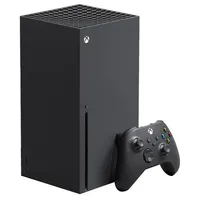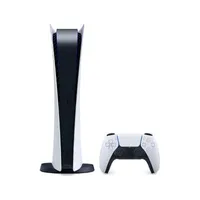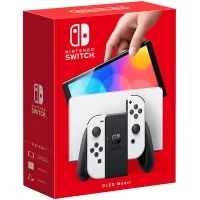TechRadar Verdict
The Xbox Series S is a great entry point into new-gen gaming for those who have no qualms about buying games digitally or subscribing to Xbox Game Pass. It's a great option if you want to avoid the sizable financial outlay required to own a full-blown new-gen console, but there are some drawbacks. It has significantly less storage, prioritizes 1440p resolution for gaming, and does without the 4K HD Blu-Ray drive of the Xbox Series X.
Pros
- +
The smallest Xbox ever made
- +
Compact design, powerful specs
- +
Completely silent in operation
- +
Faster load times
Cons
- -
Targets 1440p resolution when gaming
- -
512GB SSD fills up fast
- -
No disc drive
- -
UI can be overwhelming at first
Why you can trust TechRadar
Xbox Series S two-minute review
The Xbox Series S is a more affordable alternative to the Series X, and despite the smaller size, it's still got some incredibly impressive capabilities that won't cause you to break the bank. Because of this, it's a fantastic gateway into current-gen gaming without setting you back as much as you might expect.
The Xbox Series S is designed to take the same generational leaps as the Series X, such as being capable of ray tracing, sporting lightning-fast load times, and showcasing higher frame rates, yet it remains to be significantly cheaper than its competitor, but there's certainly a hit to overall power and features.
The Xbox Series S is praised for its digital-only build, but surprisingly there is significantly less storage than the Xbox Series X. The console also targets a 1440p resolution rather than 4K, with the opportunity to upscale when connected to an Ultra HD display. But the console is designed to run optimally at lower resolutions. So you should take your display setup into account when thinking of purchasing the Series S.
Microsoft's more affordable Xbox also does away with the 4K HD Blu-Ray drive of the Xbox Series X, making this a digital-only affair. If you've amassed a large library of the best Xbox Series X games over the years, this alone could be a deal-breaker and means you're at the mercy of Microsoft's store pricing when it comes to buying new titles.
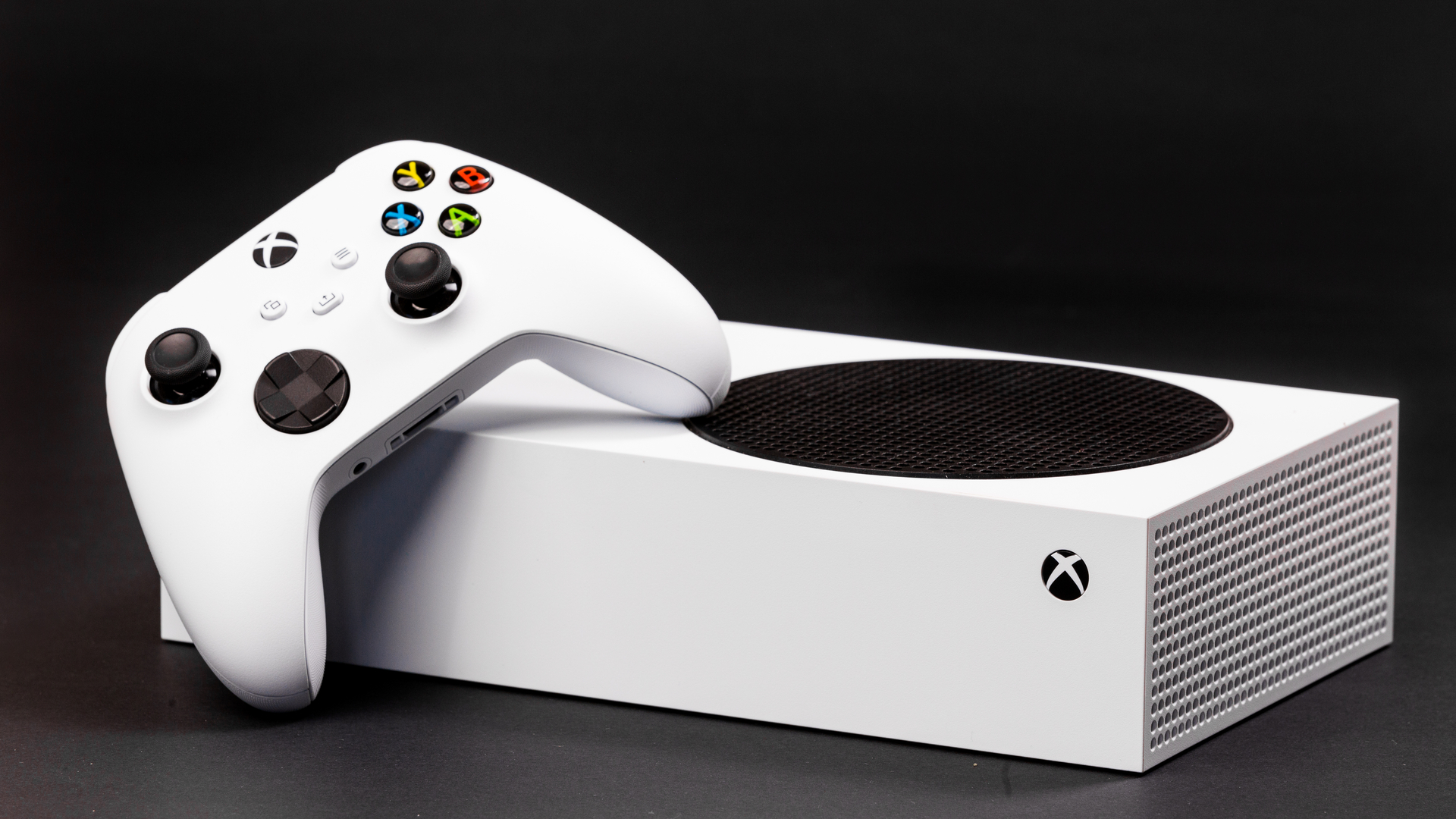
We've updated our Xbox Series S review to reflect our impressions after using the console for close to three years. Microsoft has rolled out a few welcome improvements to the Series S, and we now finally have exclusive titles that take full advantage of the hardware's power like Halo Infinite and Forza Horizon 5.
These cutbacks might be too much for some users, then, but it makes the Xbox Series S a much cheaper and less hefty device as a result. Crucially, it's still capable of playing new-gen games, making this a great entry point into the Xbox ecosystem.
During our time with the Xbox Series S, we tested dozens of games – from last-gen Xbox Series X/S optimized hits including Halo: The Master Chief Collection, Forza Horizon 4, Doom Eternal, and Gears 5, to launch titles like Yakuza: Like a Dragon.
Each one impressed us, with smoother frame rates, increased resolutions (when compared to Xbox One, and Xbox One S), and faster load times, even if the games didn't look quite as pretty as they did running on the Xbox Series X. But that's mostly due to Xbox Series S targeting a lower resolution.
Sign up for breaking news, reviews, opinion, top tech deals, and more.
That said, for gamers who have no qualms about buying games digitally, or subscribing to Xbox Game Pass, you’re getting the full suite of next-gen features on Microsoft's cheaper console: Quick Resume, Auto HDR, 120Hz, you name it. The Xbox Series S is a great option for those wanting to experience new-gen gaming, without the sizable financial outlay required to own a full-blown console.

As we've alluded to already, there are drawbacks to consider. If you prefer to purchase games physically, or have amassed a large collection of Xbox One games over the years, the Xbox Series S's lack of disc drive may put you off.
You only get a 512GB SSD, too, as there's no higher-capacity option. And while the console's SSD is dramatically faster than the old mechanical drives in the Xbox One X and Xbox One S, it can fill up fast. The five games we mentioned above almost took up the entire 512GB SSD on our review unit (you only get 364GB of usable space), leaving us with just 30GB of storage to play with.
That means if we wanted to install a game of that size to the system's internal drive, we'd likely have to delete something first (or additionally purchase the Seagate Xbox storage expansion card, which costs nearly as much as the Xbox Series S itself).

The Xbox Series X utilizes its powerful specs to significantly reduce load times and increase overall game performance and visual fidelity. But, while features such as Quick Resume, Smart Delivery, and backward compatibility give it that extra boost, it's hard to deny that it’s lacking in key areas, notably significant UI improvements and captivating exclusive launch titles.
Read our Xbox Series X review
What may deter people from buying Microsoft's more affordable Xbox is the fact that it outputs at 1440p for gaming. This lower resolution is a firm favourite in the PC gaming space due to the superior image quality it provides over 1080p, and the lower amount of graphical grunt it requires from developers to achieve. This has allowed Microsoft to create a lower-spec machine that still boasts next-gen features.
If you own an Xbox One X, the drop to 1440p from native 4K can be noticeable. The Xbox One X could deliver games like Forza Motorsport 7 at 4K/60fps and is still capable of some sumptuous visuals. It's easy, then, to think that the Xbox Series S is a step back – however, it's capable of a lot more than Microsoft's aging Xbox One X, even if it doesn't always beat it in terms of resolution.
Looking at the system internals, the Xbox Series S separates itself from the One X with its vastly more powerful CPU and more technically capable GPU, courtesy of AMD's RDNA 2 architecture which enables cutting-edge features like ray tracing. Yes, the Series S has fewer teraflops than the Xbox One X (four compared to six), but teraflops are no longer the defining factor in how GPU power is determined.
For Xbox One owners looking to upgrade without breaking the bank, the Xbox Series S is a great option, if you can accept what it's been designed to achieve. If you've already got the Xbox One X and a 4K display at home, however, we suggest considering the Xbox Series X instead. Read on for our full Xbox Series S review.
Considering the bigger sibling? Check out our Xbox Series X video review below.
Xbox Series S: price and release date
- Xbox Series S release date: Out now (released November 10, 2020)
- Xbox Series S price: $299.99 / £249.99 / AU$499
- Can be bundled with Xbox Game Pass Ultimate for $24.99 / £20.99 / AU$33 a month
The Xbox Series S is available now for $299.99 / £249.99 / AU$499 and was released on November 10, 2020. That's the same release date as the Xbox Series X, though the price is significantly cheaper than the Series X's price of $499 / £499 / AU$749. Thankfully, Xbox won't follow PlayStation with price hikes, so while Xbox doesn't rule out future price hikes just yet, this isn't changing anytime soon.
Keep in mind however that, without a disc drive, you won't be able to buy used games or trade games with your friends: you're dependent on the Xbox Store for any purchases, which means you won't always get the best deal.
That issue is negated somewhat if you subscribe to Xbox Game Pass (a separate expense, but exceptional value nonetheless), or if you only buy the occasional game at full price around launch. Still, it's not ideal for those who rely on physical game sales or trade-ins to fund their favorite pastime.
Xbox Series S is also available on Microsoft's Xbox All Access subscription service in select regions, including the US, UK, and Australia. Xbox All Access bundles the console with Xbox Game Pass Ultimate on a 24-month plan (giving you access to the latter for the duration) for $24.99 / £20.99 / AU$33 a month, with no upfront costs – that's a good deal which proves cheaper than buying the console and 24 months of Xbox Game Pass Ultimate separately.
Of course, Microsoft isn't the only one with newer hardware out. Sony released the PS5 and PS5 Digital Edition soon after the Xbox Series S and Series X dropped, so if you're still on the fence then it's worth checking out our PS5 review before committing.
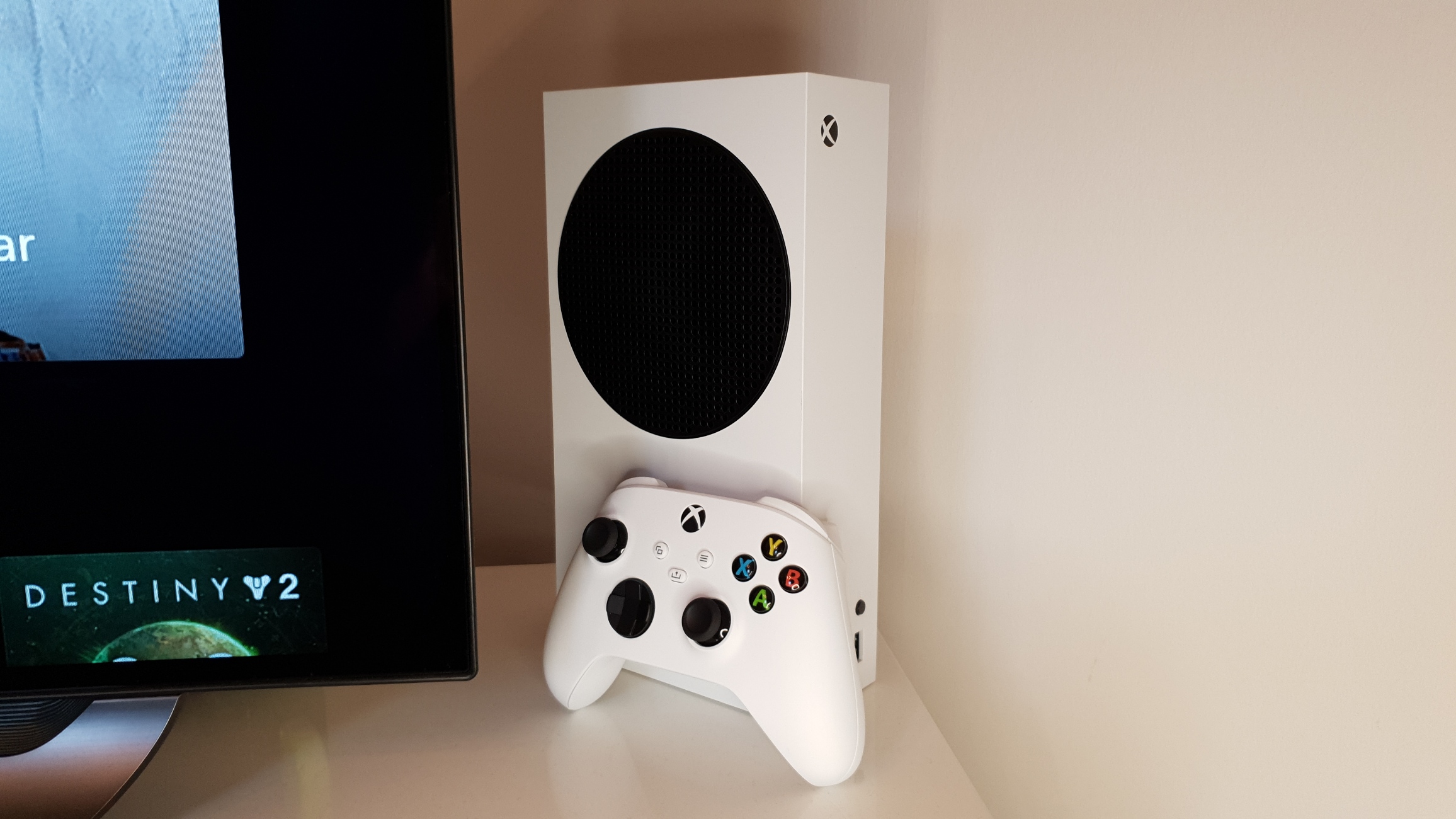
Xbox Series S review: design
- Looks great when placed horizontally or vertically
- Can comfortably fit into any setup
- The console and controller look great in white
While the hardware powering the Xbox Series S is brand-new, the Xbox Series S design is reminiscent of the now-discontinued Xbox One S All-Digital Edition.
The Xbox Series S has a distinctive black fan vent, almost like a speaker grille, on the top that breaks up the swathe of white which encases the rest of the console, and it's where the majority of heat is exhausted. It's the smallest Xbox that Microsoft has ever made, with a plain front face that sports a single USB port and a power button. It's a clean, understated, and functional design.
For ports, you’ll find an HDMI 2.1 output, two USB 3.2 ports, an Ethernet port, a storage expansion slot, and an AC input. Perhaps unsurprisingly, the Xbox Series S doesn't have a port for Kinect, Microsoft's now-defunct motion-sensing camera, or a HDMI input for cable boxes. However, that the Xbox Series S only ships with a High-Speed HDMI cable, not an Ultra High-Speed HDMI cable.
With weight and size, the Xbox Series S measures in at 6.5 x 15.1 x 27.5cm and 4.25 pounds (around 2kg). Its size should ensure it easily fits into most entertainment center cabinets and on TV stands, and it's light enough to pack up and bring to a friend's house or take with you on vacation.
As we mentioned above, the Xbox Series S is smaller than the Xbox One S. That's an impressive feat considering that it’s packing a 4 TFLOP GPU and an octa-core Custom Zen 2 CPU that needs to be cooled.
While some might not like the way Microsoft has aped its own design from the last generation, we're okay with it. It's nice to have some continuity, especially in products that are advertised as a family of devices, although it is fairly straightforward and industrial-like in its appearance.

Xbox Series S review: performance
- Upscaled 4K looks great, and native 1440p is a nice compromise
- Offers smooth and fluid 120fps gameplay
- Xbox Velocity Architecture is fast… but not instantaneous
The Xbox Series S's strong suit is its value proposition – it's a compact powerhouse. It can offer either upscaled 4K gaming, native 1440p resolution, or a 1080p picture.
Its GPU, while not as powerful as the one in the Xbox Series X, can upscale games to 4K (in a similar way to the Xbox One S) and still run games at 120fps at 1440p, but you'll need a HDMI 2.1-compliant TV if you want to keep the resolution at 1440p. It's also capable of ray tracing, and loads games faster than ever, thanks to Microsoft's Xbox Velocity Architecture.
Combine Velocity Architecture with the 10GB of GDDR6 memory and built-in SSD, and you’ve got all the makings of a powerful console. Better still, Microsoft recently gave a performance boost for Xbox Series S games, which frees up hundreds of additional megabytes of memory. Crucially, this should help improve graphics performance.
CPU: 8-core 3.6GHz (3.4GHz with SMT) custom AMD 7nm
GPU: 4 teraflops at 1.565GHz
RAM: 10GB GDDR6
Frame rate: Up to 120fps
Resolution: 1440p with 4K upscaling
Optical: No disk drive
Storage: 512GB NVMe SSD
Usable storage space: 364GB
But do you actually need a 4K TV? And furthermore, do you need one that supports HDMI 2.1 for its 120Hz refresh rate? Let’s walk through all the scenarios.
If you're using a 1080p TV, the Xbox Series S uses a technique called supersampling to create better-looking images, even on less-capable displays. Supersampling is a complex process, but the basic idea is that the game is rendered at a higher resolution, and then the console downscales the image to match the output of your TV.
The end result is a noticeable boost in image clarity and anti-aliasing (the removal of jaggies and pixelated edges) and means that gamers who aren't using a 4K or 1440p -capable screen will still benefit from improved image quality from the Xbox Series S.
Most folks though, we expect, will be pairing the Xbox Series S with a 4K HDR TV – potentially one with a 120Hz native refresh rate, although the majority of displays sold over the last few years are likely to only support 60Hz at 4K and 1440p. If you do have a capable display, here's how to enable 120Hz on Xbox Series S.
Hook the Xbox Series S up to a 4K panel, and the console uses a technique called upscaling to convert a non-native 4K signal to 4K. While there's a stark difference between rendering in 4K, and rendering in 1440p and then upscaling to 4K – especially if you've got a keen eye for detail – it still makes games on the Xbox Series S look better than if the console was locked to a 1440p output.
It's worth noting that the Xbox Series S can render some games in native 4K if a developer chooses to enable that option. Just be aware it's done on a game-by-game basis, and isn't something you’re going to see on every game on the system.
The upshot here is that the console can utilize HDR (high dynamic range), which enables a wider color palette, higher peak brightness, and better contrast levels. Skies look bluer, the grass looks greener and colors pop in every scene. If you haven't had the opportunity to game in HDR yet, you're in for a treat.
If you are fortunate enough to have a display that's compliant with HDMI 2.1, you can enable 120fps at 1440p without having to drop down to 1080p resolution. To enable 120fps, simply pop into the console's audio and visual settings, where you can choose from various frame rate and resolution options.
It's pretty straightforward, but it's worth noting that not all games can hit 120fps, though Microsoft has amassed a handsome collection of titles since launch including Halo Infinite, Gears 5's multiplayer, and Call of Duty: Vanguard. Check out the full list of Xbox Series S games with 120fps support.
Even if you don't invest in a new TV, you're still going to see the benefits of the new SSD and Microsoft's Xbox Velocity Architecture. The latter is a multi-step solution that combines the Series S's custom NVMe SSD, hardware-accelerated decompression blocks, a brand-new DirectStorage API layer, and Sampler Feedback Streaming (SFS).
That's a lot to parse, but the gist of it is that data is stored in a more efficient way, and can be loaded into memory faster thanks to both the physical storage medium and the software algorithms that Microsoft has implemented to load the data.
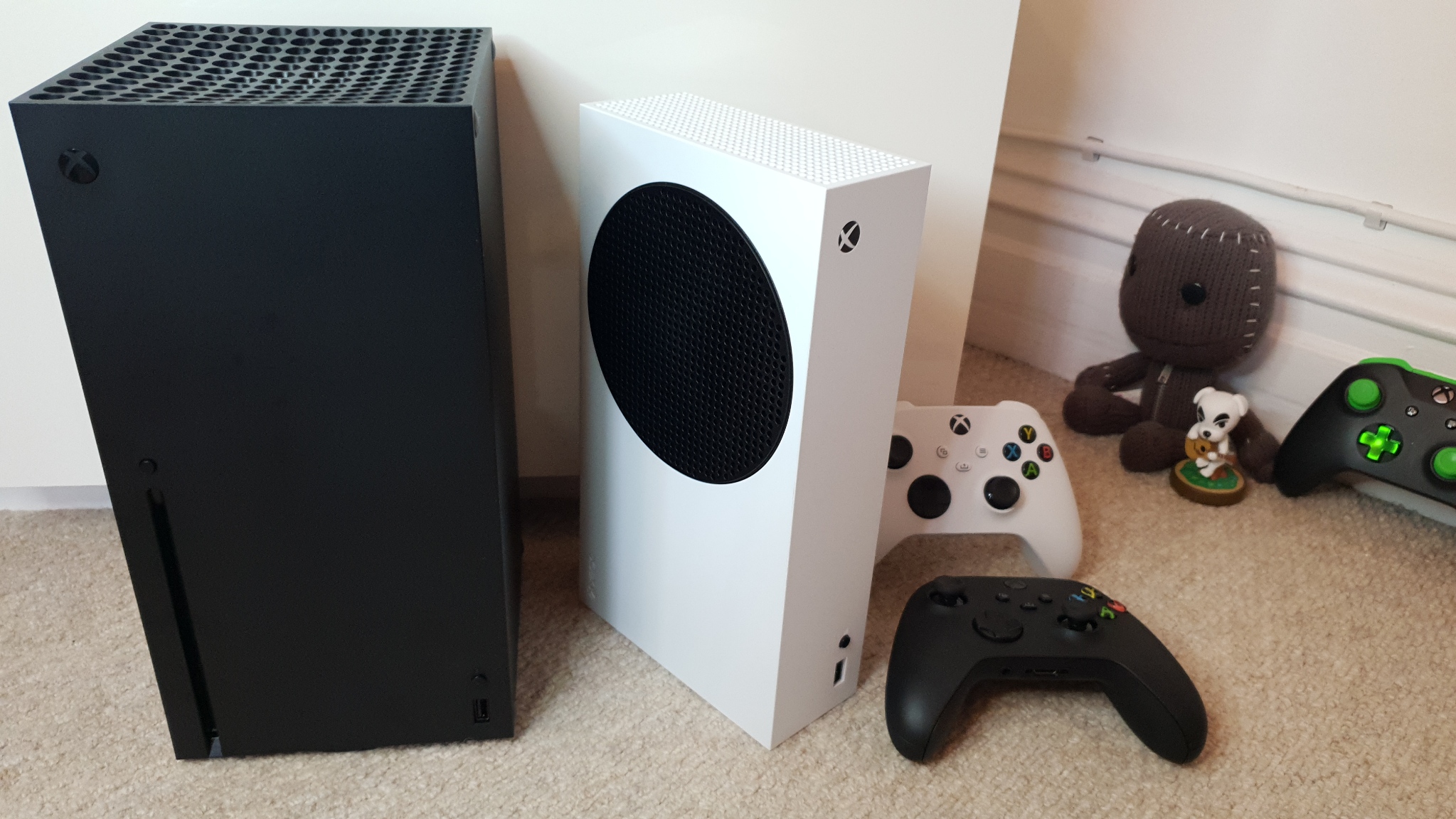
The result is significantly faster load times compared to Xbox One X – we're talking about games that now load in a matter of seconds. The SSD also enables features like Quick Resume, which we’ll get to shortly. Of course, the one area that's less impressive here is the meager 512GB of storage capacity, which most people will fill up fast.
While 500GB was sufficient early on during the last console generation, game file sizes have expanded exponentially in the years since, making anything less than 1TB of storage seem like a raw deal. It gets worse when you realise that you can't access the full 512GB of storage. The system OS takes up 148GB of space, meaning you've only got 364GB of usable storage to play with from the outset.
By the time you've installed four or five games, you'll need to start thinking about what to uninstall, which is never a fun experience. While Microsoft claims that games on Xbox Series S will be up to 30% smaller due to not having 4K texture files, this won’t stop the system's internal drive from rapidly filling up.
The good news is that Microsoft has released an add-on storage solution at launch, in partnership with Seagate, that can add 2TB, 1TB or 500GB of extra storage if you run out of room. The bad news? The 1TB Seagate Storage Expansion Card costs $219.99 / £219.99 / AU$359 – money that could be spent on buying an Xbox Series X instead, which has 1TB built-in storage and better 4K support.
Xbox Series S review: controller
- More tactile than before thanks to careful refinement
- Triggers are shorter, controller is easier to grip thanks to new textured finish
- Share button is a welcome addition, and the 360-degree D-pad feels great
- Still uses AA batteries, unfortunately
Coming from the Xbox One Controller, you'd be forgiven for thinking that the Xbox Wireless Controller for Series X/S isn't that different. However, it's now more comfortable and easier to use than ever before, due to subtle changes in the controller's ergonomics.
Its overall dimensions have been tweaked ever so slightly, reducing the size of the controller as a whole, but not to the point where it's noticeable to the average user. It means more hand sizes can use the new Xbox pad comfortably. Other changes include a textured and matte finish on the handles, triggers, and bumpers, that help you get more purchase on the controller during tense gaming sessions.
Probably the biggest change for the controller itself, though, is the new D-pad, which has been revised to be a full 360-degree pad that feels great on the thumb. Each direction clicks with a satisfying sound and tactile feedback (though some might find it noisier than they'd like). Its smooth finish makes pulling off half-circle sweeps in fighting games a real pleasure.
Another minor change is that the triggers have been shortened to make them more accommodating for smaller hands. These triggers still have haptic feedback in the form of rumble motors, but it's not the same as the adaptive triggers in the PS5 DualSense controller, which can change resistance on the fly.
The new Share button does exactly what you'd expect – it captures and shares moments in your game for posting in your Xbox Feed or on social media. One click takes a snapshot, while holding the button down longer captures a 15-second video (you can adjust the duration in the Capture settings).
It's much easier than on the Xbox One, where you had to press the home button twice and then X or Y, but it takes some getting used to if you’re accustomed to the old way.
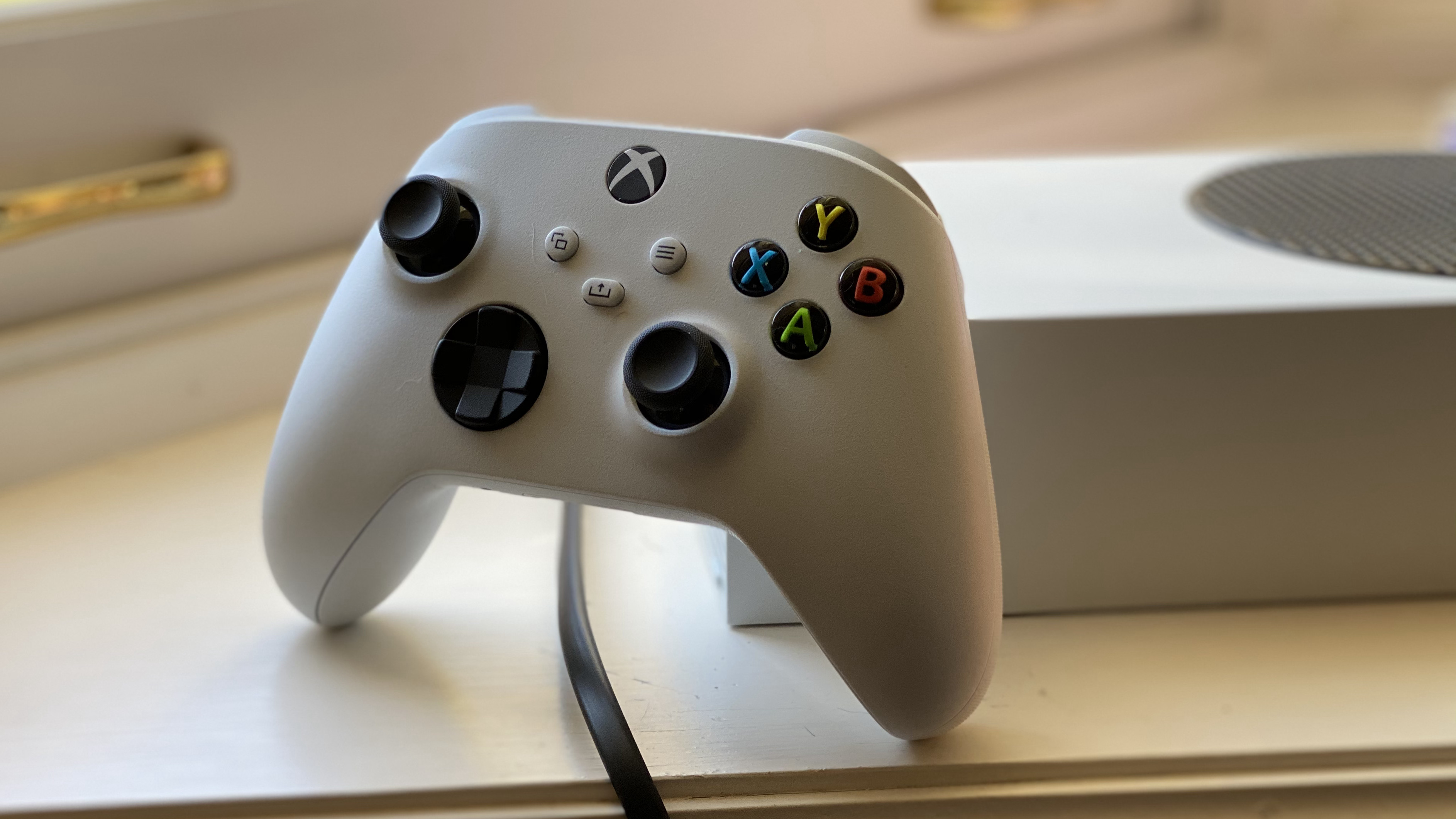
Overall though, it's mostly what you remember, with two asymmetrical analog sticks, the menu and view buttons that fill in for start and select, and the four face buttons (A, B, X, Y).
The Xbox Series S controller keeps its 3.5mm audio jack and expansion port at the bottom, but it now uses a USB Type-C charging port instead of microUSB. You'll also find the pairing button at the top, which you use to sync the controller to the console, or for pairing when using Bluetooth.
The new Xbox pad is still a comfortable controller to play with, but its biggest weakness is the fact that it still uses AA batteries. That's instead of a rechargeable lithium-ion cell like the Xbox Elite Wireless Controller or Xbox Elite Wireless Controller Series 2 houses. We found a pair of AA batteries lasted for around 10 days or so of heavy gaming.
If you're appalled by the idea of a controller using AA batteries in 2020, you can also pick up Microsoft's play-and-charge kit, which comprises a rechargeable battery and USB-C cable, for $24.99 (£20.99 / AU$29.95 ) to save you money in the long term (you can also use rechargeable AAs).
While the kit is obviously an extra expense that may irk some, there's an element of flexibility at least – and you're also not at the mercy of a lithium-ion cell battery, which can degrade over time, and which is more costly to replace should anything go awry.
Our advice? Pick up rechargeable batteries, or Microsoft's play-and-charge kit, if you plan on doing more than 40 hours of gaming a week.
Xbox Series S review: features
- User interface feels a bit overcrowded and, in some places, slow
- Quick Resume feels really cutting-edge
- Smart Delivery ensures you get the best possible version of a game
- Good selection of streaming apps, plus Dolby Vision and Atmos support
If it's been a few years since you bought an Xbox console, and you're worried that the process of setting it up might be confusing, don't be. Setting up the Xbox Series S proved to be a streamlined process, thanks in no small part to the new-and-improved Xbox app for Android and iOS. We've even seen Discord become available for all Xbox Series S players.
You’ll need to download the Xbox app from the App Store for iOS or Google Play Store on Android devices, and log in to your Microsoft account. Once you're in, power on the console and type in the code you see in the app, which appears on your TV screen – this pulls in all your data without you having to type it all in. You'll still need to enter a few details via the console, like Wi-Fi password, but then you're off to the races after waiting for an update to land.
The UI that greets you when you’ve finished setting up the Xbox Series S will be instantly familiar to anyone who's used an Xbox One in the last three months. The 'new' Xbox Dashboard rolled out in August 2020, and is the same across both Xbox Series X and S and the older hardware. It isn’t the most intuitive of interfaces, though.
There's a lot of information on display at once, and it's fair to say there's a small learning curve when it comes to figuring out how to navigate the UI effectively. The downside to the new consoles having the same user interface as the One series is that the Xbox Series S doesn't feel any different right away. It doesn't feel that new, even if navigating the dashboard feels snappier than before thanks to the extra power underneath the hood.
Moreover, the new UI still presents some of the same problems we've noticed in the past with Xbox One's interface: some images on the screen take a few seconds to load as content is pulled from the internet, and it's generally a bit too busy for most tastes, with far more information on the screen than you actually need at one time. Look past the UI, however, and you'll begin to see some areas where the Xbox Series S really innovates, though they're admittedly more subtle.
We can expect further changes to come for the UI, too. If you're an Xbox Insider, Microsoft recently rolled new Xbox Series X homepage layouts but fans aren't happy. While this introduces some quality of life changes, some players weren't so keen on the "tile clutter" this introduced, while others aren't fond of ads still taking up homepage space. As a feature currently in beta testing, this could change, so we'll keep this updated as we learn more.

Smart Delivery from the Xbox Store means you'll always get the best possible version of a game when you download it, or if it's upgraded in the future. Your save data also carries over seamlessly, even if you jump back and forth between your old Xbox One / One X / One S and new Xbox Series S. It's simultaneously backward and forward compatibility, which is reassuring.
Jumping between multiple games is now possible thanks to Quick Resume, a new feature that allows the Xbox Series S to hold multiple game states in the memory at one time, so you can jump back and forth between games without having to reload them.
The number of games that can be suspended varies – we had as many as eight in rotation at one point – and it won't work with every title, especially those with ever-changing online worlds, like Sea of Thieves. It's a handy, time-saving feature that's only possible thanks to the console's SSD, and game states are preserved even if the console is completely powered down.
Lastly, we have to talk about the console's multimedia capabilities. As a streaming device, the Xbox Series S carries most major services. That goes between Netflix, Amazon Prime Video, Disney Plus, and others that are available on existing Xbox One consoles, plus some that are new to the platform, including Apple TV Plus. There's also region-specific apps such as Hulu in the US, and Sky Go in the UK.
Accessing these requires navigating to the Apps section of your library. Or, if you frequently use particular apps you can pin them to the home screen or create a specific group that can be accessed from the Xbox guide. We noticed that, like games, apps stayed in a suspended state when we flicked between them.
It's important to note that while the Xbox Series S only outputs at 1440p resolution when you're gaming, the console is capable of displaying streaming apps in 4K HDR. That means the likes of Netflix, Disney Plus and Apple TV Plus will output in 4K if you're using a compatible display.
As on the Xbox One X, some of these services are available in Dolby Vision and Dolby Atmos, giving you access to advanced HDR and 3D surround sound respectively, but you may have to pay for a higher subscription tier in order to access those formats.
Xbox Series S review: game library
- Scarce launch lineup with few exclusives
- Backwards compatibility with three generations of Xbox consoles
- Xbox Game Pass is a great way to instantly build up your library
We won't mince words here: the Xbox Series S's game library got off to a bad start. With the delay of Halo Infinite, there weren't any first-party exclusives available at launch on the Xbox Series S, other than titles that have previously been available on Xbox.
More third-party and first-party exclusives have since arrived like The Medium and Microsoft Flight Simulator, but Microsoft's first-party output is slowly catching up. Halo Infinite, Forza Horizon 5, Psychonauts 2, Grounded, and As Dusk Falls are all now available.
Instead of releasing new experiences on day one, Microsoft mainly opted to improve the existing library of games via Xbox Series S optimizations. Games like Gears 5, Forza Horizon 4, Ori and the Will of the Wisps, and Sea of Thieves have all been optimized to either increase their base resolution or frame rates or to offer greater visual fidelity.
If you want to quickly see which games have been optimized for the Xbox Series S, head to 'My Games & App' > 'Games' > and then select 'Group by console type'. You can then see all the games optimized for Xbox Series X/S at a glance.
If you're someone who loves having access to the entire library of Xbox games past and present, the Xbox Series S will be appealing because it supports four generations of Xbox titles, stretching all the way back to the original Xbox. Being able to jump back and forth between Xbox 360 classics like Viva Piñata and Red Dead Redemption to more modern-day blockbusters is comforting.
It's nice not having to break out the old hardware or track down an old CRT TV but the caveat here is big. Because the Xbox Series S doesn't have a disc drive, you'll need digital versions of those older games in order to play them – and for that reason alone, Xbox Game Pass is great.
On it, you'll find over 100 games available to download on the Xbox Series S, with a mix of new first-party titles like Halo: The Master Chief Collection, Gears 5, and Forza 7, and some indie gems from the Xbox 360 era. If you're someone who loves the Xbox Games with Gold program but wished you had a few more options to download, Game Pass is really satisfying.
While Game Pass can't make up for that lack of exclusives, it does enable you to pad out your library and gives you a chance to see some of the best previous-gen games in a new light. You also get access to all of Microsoft's first-party games the day they release, which represents a huge long-term saving in itself.
Xbox Game Pass Ultimate subscribers can also stream games via Xbox Cloud Gaming. It means that rather than take up storage space, you can play games instantly without having to wait. This is a great option if you simply want to try something out, but we still prefer gaming natively as opposed to via the cloud due to increased input latency and some image issues that can occur.
If you're hoping to get Xbox Game Pass Ultimate for an even cheaper price, we've got good news. While this is currently being trialled in just the Republic of Ireland and Colombia, Microsoft is looking to launch an Xbox Game Pass family plan, allowing you and four players to jump in for a monthly cost of €21.99 – which comes to around $21.99 / £19.99 / AU$32.99
Should I buy the Xbox Series S?

Buy it if...
You're on a budget, but still want to experience next-gen gaming
For original Xbox One owners, the Xbox Series S is an easy recommendation. It offers native 1440p gaming with up to 120 frames-per-second support. It's not the best console on the market, of course, but it's a massive upgrade over its predecessors.
You plan on mostly getting games from Xbox Game Pass and Xbox Live Gold
Because you'll be getting all of your games digitally on the Xbox Series S, we recommend tacking an Xbox Game Pass and Xbox Live Gold subscription onto your purchase. You get access to the latest first-party games as soon as they come out, and online play – and you'll also get two free games every month with Xbox Live Gold.
You're tired of sitting through long loading screens
The marquee features of the Xbox Series S are the SSD and Microsoft's Xbox Velocity Architecture. Being able to jump between games with Quick Resume means you won't have to waste time waiting for games to boot up, while the SSD ensures that load times are half of what you’re used to seeing on the previous generation.
Don't buy it if...
You love keeping a library of games installed at all times
The SSD is certainly fast enough, but it comes at the expense of total storage space. After you account for the operating system, the Xbox Series S only has about 364GB of usable space, which fills up fast. If you like to keep games installed on your console, you’ll need to either step up to the Xbox Series X or invest in an external storage solution.
You have a large physical game or Blu-ray library
The other big drawback to the Xbox Series S is that it doesn’t have a disc drive. That means you won’t be able to use your old Xbox 360 or Xbox One games with the new console, nor will you be able to use it as a 4K UHD Blu-ray player, as you can the Series X, One X and One S.
You demand a next-gen experience with no compromises
With Quick Resume, ray tracing and 120fps gameplay support, the Xbox Series S does much of what Microsoft’s flagship console can do. However, the lack of native 4K resolution in the majority of games and a disc drive, along with a meager amount of SSD storage, means the Series S just doesn’t truly shine as a paradigm of the next-gen console.
Also consider
Xbox Series X
The next step up from Microsoft's Xbox Series S console is the similarly named Xbox Series X. It's capable of true 4K gaming and includes a 4K HD Blu-Ray drive.
PS5
If you're interested in playing all of Sony's fantastic exclusives, you'll need a PS5 to do so. We're a big fan of the PlayStation 5, especially its clever controller, the DualSense.
Nintendo Switch OLED
Sometimes gaming's just better on the go, and the Nintendo Switch OLED is the best version of the Japanese company's hybrid handheld to date. An incredible library of games and a gorgeous screen makes the Switch OLED well worth considering.
First reviewed: November 2020.
Adam was formerly TRG's Hardware Editor. A law graduate with an exceptional track record in content creation and online engagement, Adam has penned scintillating copy for various technology sites and also established his very own award-nominated video games website. He’s previously worked at Nintendo of Europe as a Content Marketing Editor and once played Halo 5: Guardians for over 51 hours for charity. He is now an editor at The Shortcut.
- Henry Stockdale
- Nick Pino
- Kara PhillipsEvergreen Writer
- Rhys WoodHardware Editor


